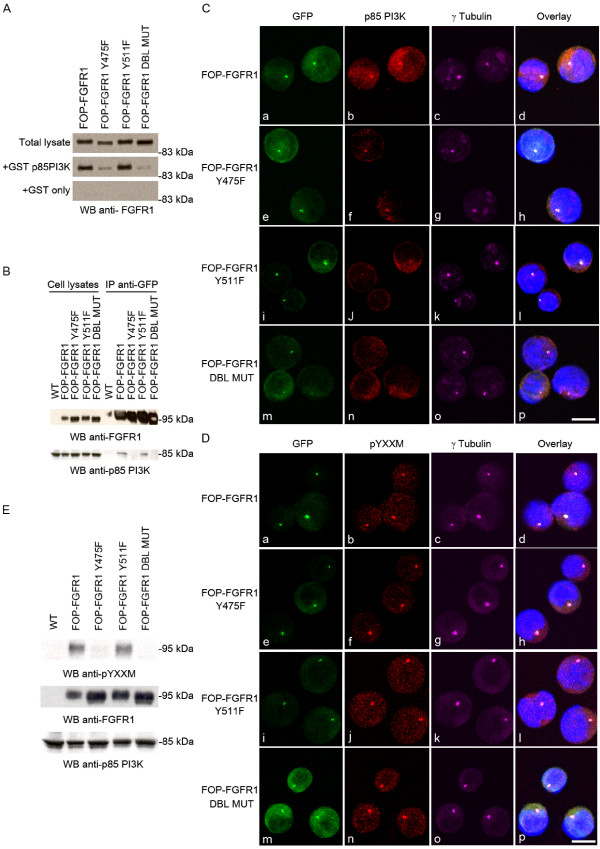Figure 3.
Mutation of tyrosine 475 in the YXXM motif of FOP-FGFR1 reduces the interaction with p85 PI3K. (A) Pull-down assays were done on lysates from Cos-1 cells transiently expressing FOP-FGFR1 or its tyrosine-to-phenylalanine mutants on tyrosine 475, 511, or both in DBL mutant. GST-p85-SH2 PI3K or GST alone were used for pull-down, and anti-FGFR1 antibody was used to reveal bound FOP-FGFR1 or mutant proteins. (B) Co-immunoprecipitation were done with anti-GFP antibody on lysates from HeLa cells transiently expressing GFP-tagged FOP-FGFR1 or its mutants. Anti-p85 antibody reveals endogenous p85 bound to FOP-FGFR1 or to FOP-FGFR1 Y511F mutant. (C) FOP-FGFR1 Y475F mutant partially recruits p85 at the centrosome. Direct GFP fluorescence (green, Ca,e,i,m) of FOP-FGFR1 and its mutants, and staining with anti-γtubulin antibody (magenta, Cc,g,k,o), indicate that the mutants still localize at the centrosome in stably-transfected Ba/F3 cells. Staining with anti-p85 PI3K antibody (red, Cb,f,j,n) shows the recruitment of p85 at the centrosome by the different mutants. Scale bar, 5 μm. (D) Staining with anti-pYXXM motif antibody (red, Db,f,j,n) indicates colocalization of this phosphorylated motif with GFP-FOP-FGFR1 mutants (green, Da,e,i,n) at the centrosome, visualized with anti-γtubulin (magenta, Dc,g,k,o). Scale bar, 5 μm. (E) Western-blot analysis of lysates from HeLa cells either wild-type or transiently expressing FOP-FGFR1 or its mutants. Anti-pYXXM antibody informs about the presence or not of the pYXXM motif within the different FOP-FGFR1 mutant proteins, detected with anti-FGFR1 antibody. Probing with anti-p85 antibody confirms that the protein amounts are equivalent.

